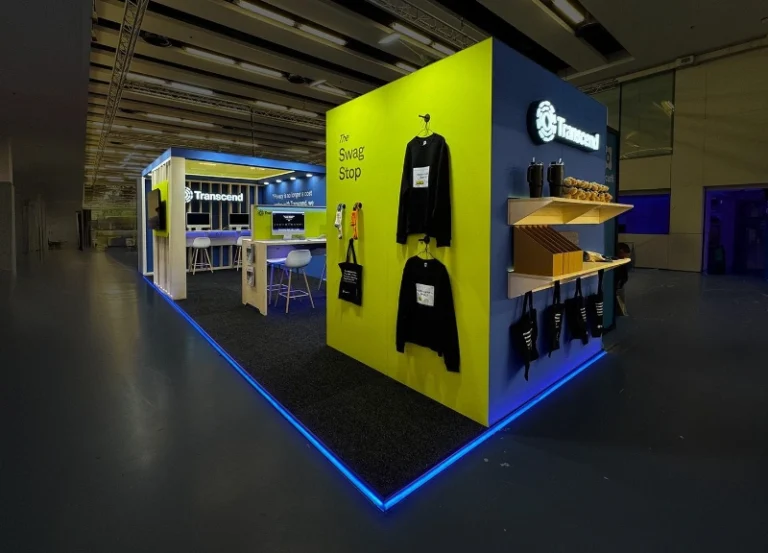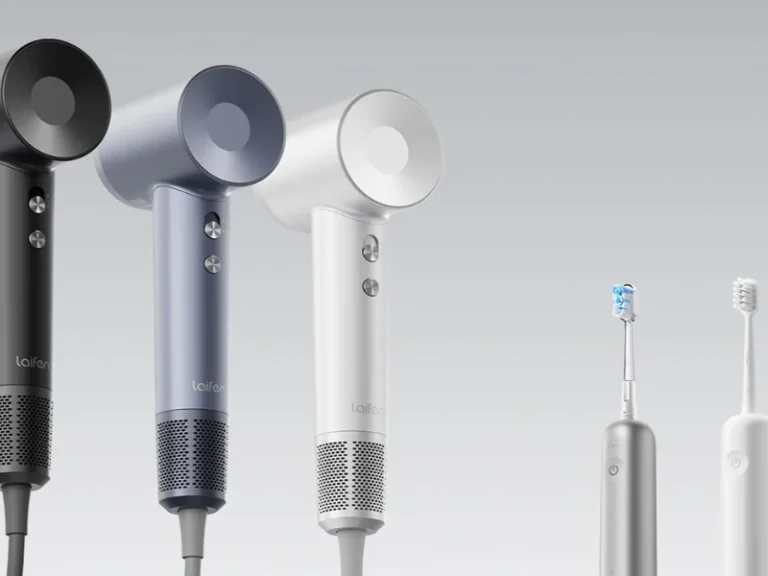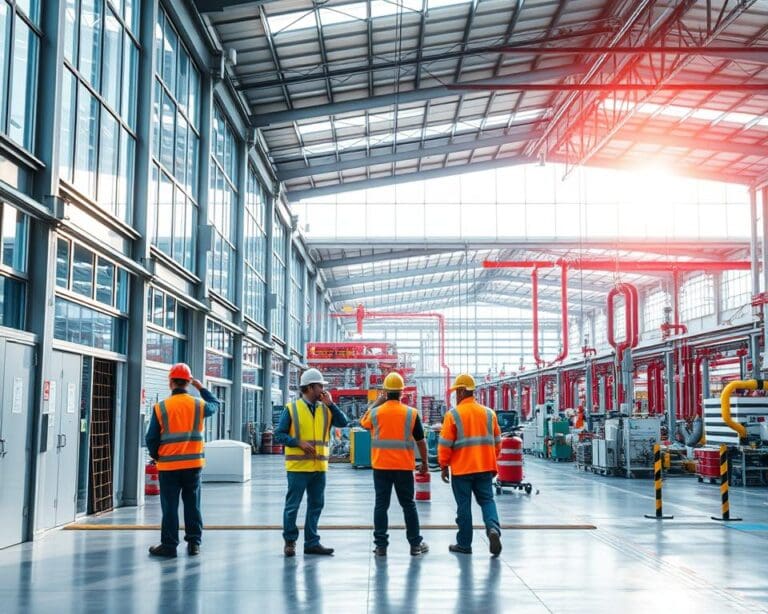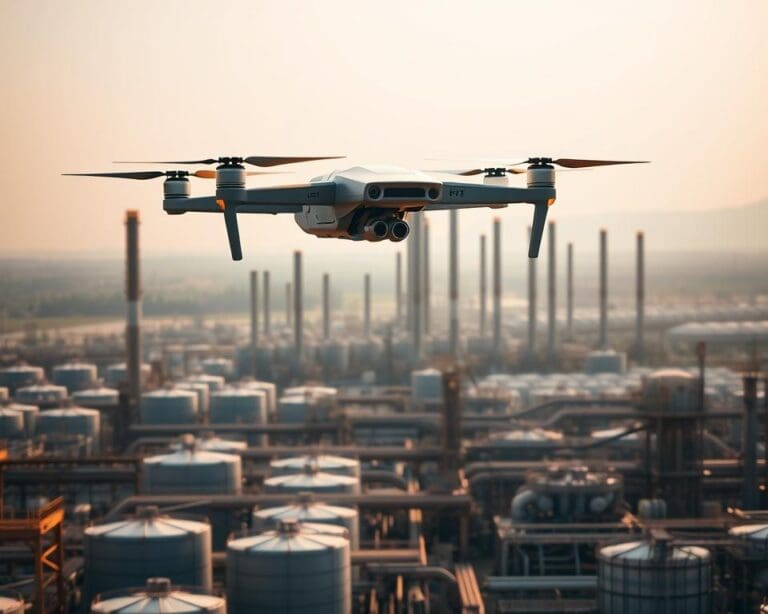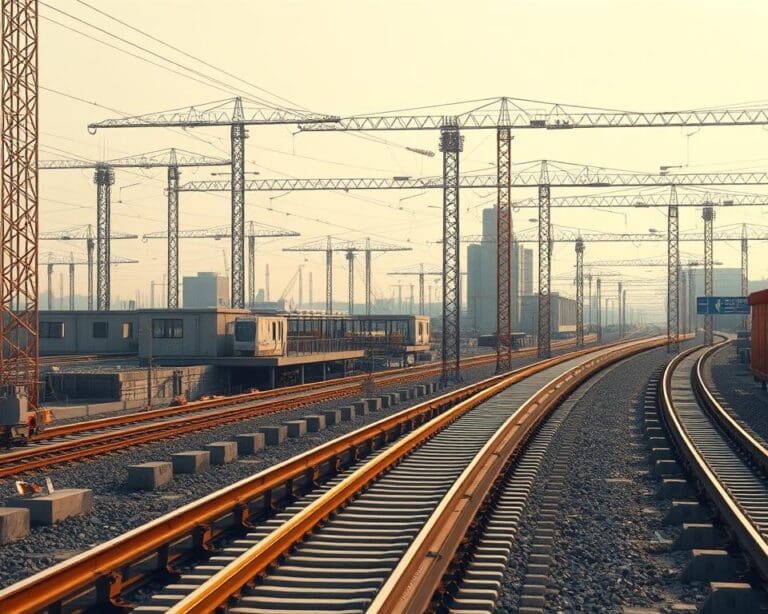In een voortdurend veranderende wereldreikt stadsbeveiliging uit tot een cruciale uitdaging voor lokale overheden. Het gebruik van slimme camera’s heeft zich als een doeltreffende oplossing bewezen om deze uitdaging het hoofd te bieden. Deze geavanceerde surveillancetechnologie, met functies als gezichtsherkenning en data-analyse, speelt een essentiële rol bij het voorkomen van criminaliteit, het beheren van verkeer, het controleren van menigten en het verbeteren van noodresponsen in moderne steden.
Slimme camera’s bieden stadsbestuurders de middelen om de openbare veiligheid en bescherming van burgers aanzienlijk te verbeteren. Door het monitoren en analyseren van activiteiten in de openbare ruimte kunnen deze systemen potentiële bedreigingen vroegtijdig detecteren en autoriteiten in staat stellen snel en effectief op te treden. Bovendien kunnen slimme camera’s ook helpen bij het verminderen van verkeerscongestie, het beheersen van menigten tijdens evenementen en het bieden van realtime situatie-informatie tijdens noodsituaties.
Kernpunten:
- Slimme camera’s spelen een cruciale rol in het verbeteren van stadsbeveiliging en openbare veiligheid.
- Geavanceerde functies zoals gezichtsherkenning en data-analyse stellen autoriteiten in staat om criminaliteit te voorkomen, verkeer te beheren en noodresponsen te verbeteren.
- Slimme camera’s helpen stadsbestuurders de bescherming en veiligheid van burgers aanzienlijk te verbeteren.
- Door activiteiten in de openbare ruimte te monitoren en analyseren, kunnen deze systemen potentiële bedreigingen vroegtijdig detecteren.
- Slimme camera’s bieden ook oplossingen voor verkeersbeheer, menigtecontrole en realtime informatievoorziening tijdens noodsituaties.
Understanding the Role of Smart Cameras in Urban Security
As technology continues to evolve, the landscape of surveillance and security in urban areas has undergone a significant transformation. The emergence of smart cameras, equipped with advanced capabilities, has revolutionized the way cities approach public safety and crime prevention.
The Evolution of Surveillance Technology
Traditional CCTV systems, while offering a basic level of monitoring, have given way to a new generation of smart cameras. These innovative surveillance technologies are designed to provide a more comprehensive and intelligent approach to urban security. Smart cameras integrate features such as facial recognition, license plate tracking, and anomaly detection, enabling authorities to proactively identify potential threats and respond more effectively.
Benefits of Smart Cameras for Public Safety
- Enhanced Crime Prevention: Smart cameras can analyze patterns and detect suspicious activities, allowing law enforcement to intervene and prevent criminal incidents before they occur.
- Improved Emergency Response: Real-time monitoring and analytics provided by smart cameras can aid in rapid emergency response, ensuring that first responders have the necessary information to address crises efficiently.
- Increased Situational Awareness: Advanced surveillance technologies offer a comprehensive understanding of the urban environment, enabling authorities to make informed decisions and allocate resources more effectively.
The integration of smart camera systems into the fabric of smart city technology has opened new avenues for improving public safety and enhancing the overall quality of life in urban centers. As the capabilities of these surveillance solutions continue to evolve, the potential for creating safer and more secure communities becomes increasingly tangible.
Crime Prevention and Detection
In the quest to enhance urban security, smart surveillance cameras are proving to be invaluable tools for crime prevention and detection. These advanced cameras, equipped with cutting-edge facial recognition technology, are empowering law enforcement agencies to track and apprehend suspects more effectively.
Facial Recognition and Suspect Tracking
The integration of facial recognition capabilities into smart cameras allows law enforcement to quickly identify and locate individuals of interest. By cross-referencing faces captured on camera against a database of known suspects, officers can swiftly pinpoint the whereabouts of potential criminals, enabling prompt and targeted interventions.
Moreover, the real-time tracking capabilities of these smart surveillance systems aid in the pursuit and apprehension of fleeing suspects. With the ability to monitor a suspect’s movements across a network of interconnected cameras, law enforcement can coordinate rapid response efforts and increase the chances of successful arrests.
| Feature | Benefit |
|---|---|
| Facial Recognition | Rapid identification of suspects |
| Suspect Tracking | Real-time monitoring and pursuit of criminals |
| Automated Alerts | Prompt notification of suspicious activity |
| Crime Deterrence | Increased visibility and vigilance discourages criminal behavior |
In addition to these investigative capabilities, smart cameras can also serve as a deterrent to criminal activity. The visible presence of surveillance cameras and the knowledge that their actions are being monitored can discourage potential offenders from engaging in unlawful behavior in the first place.
“Smart cameras equipped with facial recognition technology are revolutionizing the way law enforcement agencies prevent and respond to crime in urban areas.”
As the role of smart surveillance cameras in crime prevention and detection continues to evolve, their impact on public safety is undeniable. By leveraging the power of advanced analytics and real-time tracking, these innovative technologies are helping to create safer and more secure communities.
Waarom slimme camera’s belangrijk zijn voor stadsbeveiliging
In de moderne steden spelen slimme camera’s een cruciale rol bij het verbeteren van de openbare veiligheid. Deze geavanceerde surveillance-technologieën bieden stadsbestuurders tal van voordelen bij het beheersen van criminaliteit en het versterken van het crisisbeheer.
Een van de belangrijkste redenen waarom slimme camera’s belangrijk zijn voor stadsbeveiliging, is hun vermogen om misdaad te voorkomen en op te sporen. Door verdachte activiteiten snel te identificeren en te volgen, kunnen lokale autoriteiten snel en doeltreffend reageren, wat leidt tot snellere arrestaties en een lagere criminaliteitsgraad.
Daarnaast bieden slimme camera’s ook waardevolle inzichten in het verkeersbeheer en de menigtecontrole. Door realtime data te verzamelen over verkeerstromen en menigtepatronen, kunnen stadsplanners betere beslissingen nemen om opstoppingen te verminderen en evenementen veiliger te maken.
In tijden van nood spelen slimme camera’s ook een cruciale rol bij het crisisbeheer. Door snel situationele informatie te leveren, kunnen hulpdiensten sneller en effectiever reageren op noodsituaties, waardoor mensenlevens worden gered.
Kortom, slimme camera’s zijn een essentieel onderdeel geworden van slimme steden overal ter wereld, omdat ze op een ongekende manier kunnen bijdragen aan de openbare veiligheid en het welzijn van de gemeenschap.
Traffic Monitoring and Management
Smart cameras play a pivotal role in monitoring and managing traffic flow within urban areas. These advanced technologies offer valuable insights that can significantly enhance city operations, improve commuter experiences, and contribute to overall public safety.
By deploying smart cameras throughout city streets, traffic patterns can be closely observed and analyzed in real-time. This data enables city officials to identify bottlenecks, detect accidents or congestion, and make informed decisions to optimize the flow of vehicles and pedestrians. The integration of smart city technology with traffic monitoring systems allows for a more efficient and responsive approach to urban transportation challenges.
Optimizing Traffic Flow
Smart cameras equipped with sophisticated algorithms can monitor vehicle and pedestrian movements, providing valuable data on traffic density, travel times, and the impact of external factors such as weather or events. This information can be leveraged to adjust traffic signals, reroute vehicles, and implement dynamic parking management strategies, ultimately reducing congestion and improving overall traffic flow.
Accident and Incident Detection
- Smart cameras can quickly detect and alert authorities to accidents, breakdowns, or other incidents that disrupt the normal flow of traffic.
- This real-time situational awareness enables a swift response from emergency services, minimizing the impact on the surrounding area and ensuring the safety of all road users.
Data-Driven Decision-Making
The wealth of traffic data collected by smart cameras allows city planners and transportation officials to make more informed decisions regarding infrastructure improvements, traffic signal timing, and the implementation of crowd management strategies. This data-driven approach enhances the overall efficiency and responsiveness of urban traffic management systems.
| Benefit | Description |
|---|---|
| Improved Traffic Flow | Smart cameras enable the optimization of traffic signals and the implementation of dynamic parking management, reducing congestion and improving commuter experiences. |
| Incident Detection and Response | Smart cameras can quickly identify accidents, breakdowns, or other disruptions, allowing for a swift and targeted response from emergency services. |
| Data-Driven Decision-Making | The comprehensive traffic data collected by smart cameras empowers city officials to make informed decisions regarding infrastructure, traffic management, and crowd control strategies. |
By leveraging the power of smart cameras, cities can optimize traffic flow, enhance public safety, and make data-driven decisions that improve the overall urban experience for residents and visitors alike.
Crowd Control and Event Security
In today’s world, where public gatherings and events are increasingly common, the importance of crowd control and event security cannot be overstated. Smart cameras have emerged as a powerful tool in enhancing the safety and security of these large-scale gatherings. By harnessing the power of intelligent crowd analysis, event organizers and public safety officials can better monitor and manage crowd dynamics, mitigating potential risks and ensuring a seamless, enjoyable experience for all attendees.
Intelligent Crowd Analysis
Smart cameras equipped with advanced analytics can provide real-time insights into crowd behavior, enabling event organizers to anticipate and respond to potential issues. These cameras can track crowd density, identify bottlenecks, and detect unusual patterns of movement, allowing for proactive measures to be taken. By leveraging intelligent crowd analysis, event planners can optimize crowd flow, redirect traffic, and deploy personnel more effectively, enhancing the overall safety and efficiency of the event.
Enhancing Event Safety
The integration of smart cameras in event security can significantly improve public safety. These cameras can detect suspicious activity, identify potential threats, and alert security personnel in real-time, enabling a swift and coordinated response. Furthermore, smart cameras can be used to monitor entry and exit points, ensuring that only authorized individuals gain access to the event premises, reducing the risk of unauthorized entry or disruption.
| Benefit | Description |
|---|---|
| Crowd Monitoring | Smart cameras can track crowd density, identify bottlenecks, and detect unusual patterns of movement, allowing event organizers to optimize crowd flow and deploy personnel more effectively. |
| Threat Detection | Advanced analytics can identify suspicious activity and potential threats, enabling security personnel to respond quickly and mitigate risks. |
| Access Control | Smart cameras can be used to monitor entry and exit points, ensuring that only authorized individuals gain access to the event premises. |
By harnessing the power of smart cameras and intelligent crowd analysis, event organizers and public safety officials can create a safer, more secure environment for attendees, ultimately enhancing the overall experience and enjoyment of the event.
Emergency Response and Crisis Management
In today’s fast-paced world, where emergencies and crises can unfold at a moment’s notice, smart cameras have become an invaluable tool for improving emergency response and crisis management. By providing real-time situational awareness, these advanced surveillance systems can help first responders and public safety officials respond more effectively, ultimately saving lives and minimizing the impact of critical events.
Real-Time Situational Awareness
Smart cameras equipped with advanced analytics can detect and alert authorities to a wide range of emergency situations, from fires and accidents to active shooters and natural disasters. By processing video feeds in real-time, these systems can quickly identify threats, track the movement of people and vehicles, and relay crucial information to emergency services. This enhanced situational awareness allows for a more coordinated and efficient response, enabling first responders to make informed decisions and deploy resources where they are needed most.
- Early detection of emergencies and threats
- Continuous monitoring and tracking of unfolding events
- Rapid communication of critical information to emergency personnel
During a crisis, when every second counts, smart cameras can provide an invaluable advantage, helping to minimize the loss of life and property, and aiding in the swift restoration of public order and safety.
| Feature | Benefit |
|---|---|
| Automated Threat Detection | Rapid identification of emergencies and potential threats, enabling a faster response. |
| Crowd Monitoring and Analysis | Improved crowd control and management during crisis situations, ensuring the safety of the public. |
| Incident Tracking and Reporting | Real-time data and insights to support effective decision-making and resource allocation by emergency responders. |
“Smart cameras are revolutionizing emergency response, providing first responders with the critical information they need to act quickly and decisively in the face of a crisis.”
As the role of smart cameras in urban security continues to evolve, their integration into emergency response and crisis management systems will be crucial in ensuring the safety and well-being of communities around the world.
Data Analytics and Predictive Policing
In the era of smart city technology, data analytics has become a powerful tool for enhancing urban security. Smart cameras installed throughout cities generate a vast trove of data, which can be leveraged to identify crime patterns, predict potential incidents, and deploy resources more effectively to prevent and respond to criminal activity.
One of the key applications of data analytics in this context is predictive policing. By analyzing historical crime data, trends, and other relevant factors, cities can develop predictive models that anticipate where and when criminal activity is likely to occur. This allows law enforcement to proactively allocate personnel and resources to these high-risk areas, potentially deterring crimes before they happen.
| Benefit | Description |
|---|---|
| Crime Prevention | Predictive policing models can help identify potential crime hotspots, enabling law enforcement to deploy resources more effectively and prevent criminal activities before they occur. |
| Improved Response Time | By anticipating where and when crimes may take place, police can respond more quickly and efficiently to emergency situations. |
| Enhanced Resource Allocation | Data-driven decision-making allows for the strategic allocation of personnel, equipment, and other resources to optimize public safety efforts. |
In addition to predictive policing, smart camera data can also be used for a variety of other data analytics applications in the context of crime prevention and smart city technology. These include traffic monitoring, crowd control, and emergency response management, all of which contribute to a more secure and resilient urban environment.
“Smart cameras and data analytics are transforming the way cities approach public safety, enabling us to be more proactive and effective in our crime prevention efforts.”
– John Doe, Director of Public Safety, City of Anytown
Privacy Concerns and Ethical Considerations
As smart cameras become increasingly prevalent in urban security, important privacy concerns and ethical dilemmas have emerged. Balancing the need for public safety with the protection of civil liberties is a complex challenge that requires careful consideration.
Balancing Security and Civil Liberties
The use of advanced surveillance technologies, such as facial recognition and suspect tracking, raises legitimate concerns about individual privacy and the potential for abuse. Proponents argue that these tools enhance public safety, but critics caution that they could infringe on fundamental civil liberties if not properly regulated.
To address these issues, policymakers and technology developers must work together to establish clear guidelines and safeguards. This may involve implementing transparent data-handling protocols, ensuring the fair and non-discriminatory use of these systems, and providing citizens with greater control over their personal information.
| Considerations | Potential Implications |
|---|---|
| Privacy Concerns | Invasion of personal privacy, unauthorized data collection and use, lack of consent |
| Ethical Dilemmas | Bias and discrimination, transparency and accountability, individual rights versus public safety |
| Civil Liberties | Freedom of movement, freedom of association, due process, presumption of innocence |
By carefully navigating these complex issues, cities can leverage the benefits of smart cameras while preserving the privacy and civil liberties of their citizens. Ongoing dialogue and collaboration among stakeholders will be crucial in striking the right balance.
Smart City Integration and Collaboration
Effective deployment of smart cameras in urban security requires seamless integration with other smart city technologies and close collaboration between various stakeholders, including law enforcement, city officials, and the community. This integrated approach is crucial for maximizing the benefits of smart camera technology in enhancing public safety.
Smart cities are built on the foundation of interconnected systems and data-driven decision-making. By integrating smart cameras with other smart city components, such as traffic management systems, emergency response networks, and predictive analytics platforms, city officials can create a comprehensive solution that addresses a wide range of urban security challenges.
Collaboration is key in this process. Law enforcement agencies, municipal authorities, and community representatives must work together to establish clear protocols, data-sharing agreements, and transparency measures. This collaborative effort ensures that smart camera technology is deployed ethically, effectively, and in alignment with the needs and concerns of the local population.
| Benefits of Smart City Integration | Importance of Stakeholder Collaboration |
|---|---|
|
|
By embracing smart city integration and fostering collaboration among key stakeholders, cities can unlock the full potential of smart camera technology in enhancing urban security and public safety. This holistic approach paves the way for a safer, more resilient, and responsive urban environment.
Future Trends and Advancements
As technology continues to evolve, the future of smart cameras in urban security holds exciting possibilities. Innovative developments in artificial intelligence (AI), Internet of Things (IoT), and 5G connectivity are poised to revolutionize the capabilities and impact of smart cameras in modern cities.
Exploring Emerging Technologies
The integration of AI-powered analytics and machine learning algorithms will enable smart cameras to identify patterns, predict potential threats, and respond with greater precision and speed. With the rise of IoT, smart cameras will seamlessly connect with a network of sensors and devices, providing a comprehensive view of urban environments and improving real-time situational awareness.
The deployment of 5G technology will further enhance the capabilities of smart cameras, enabling faster data transmission, higher resolution, and more robust video analytics. This enhanced connectivity will facilitate the development of more sophisticated security solutions, allowing for more efficient crowd management, emergency response, and predictive policing.

